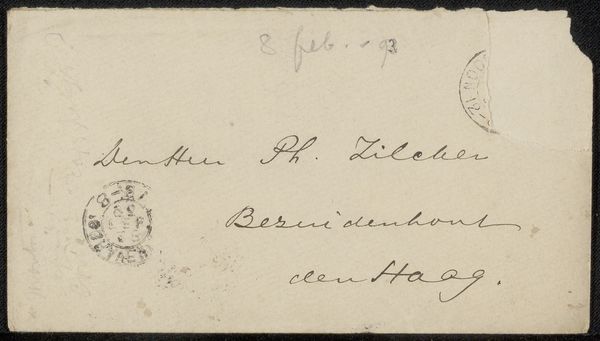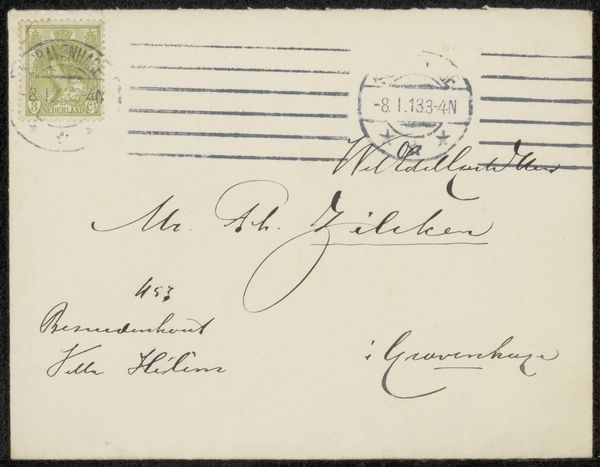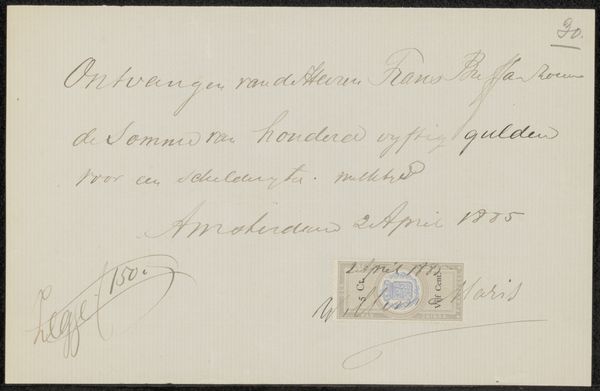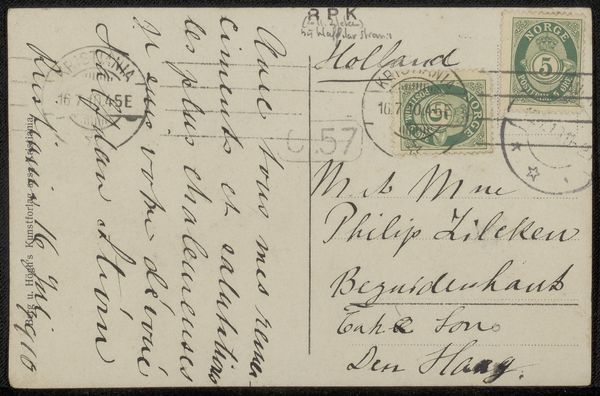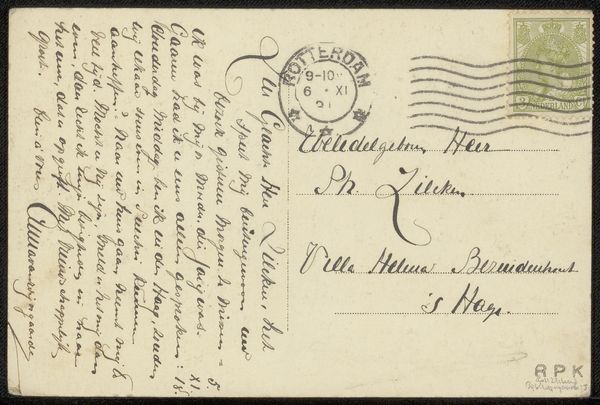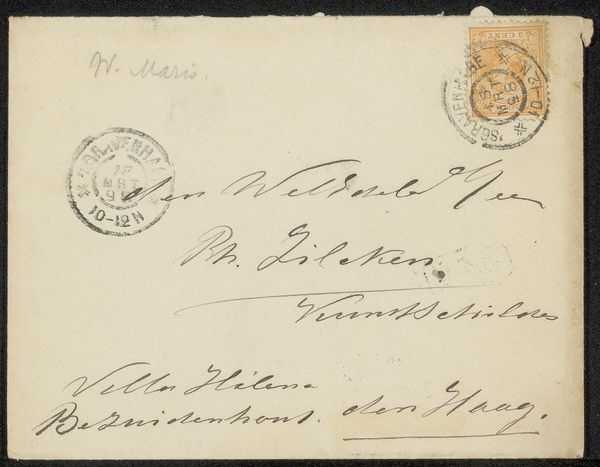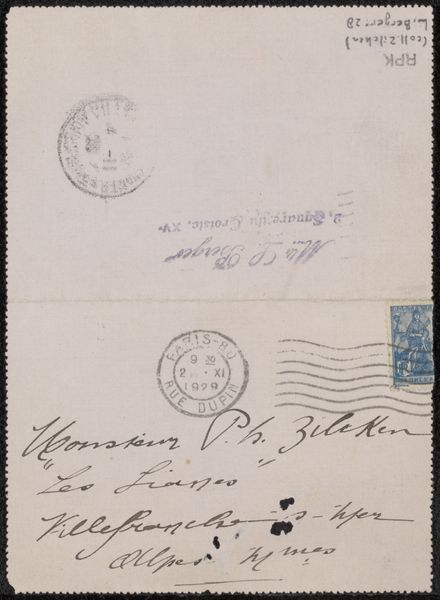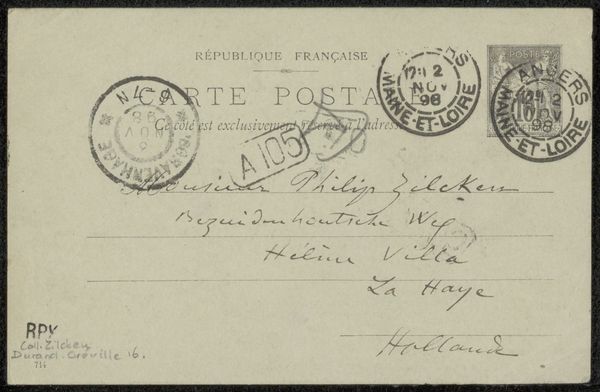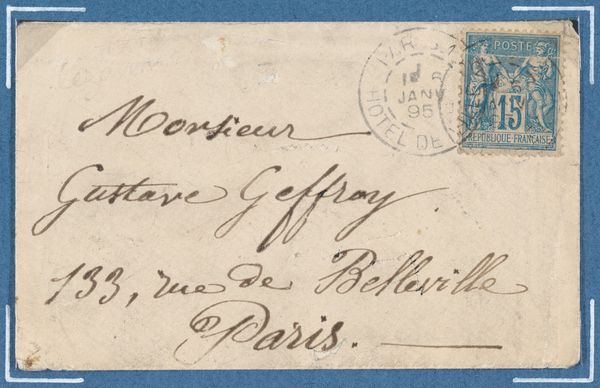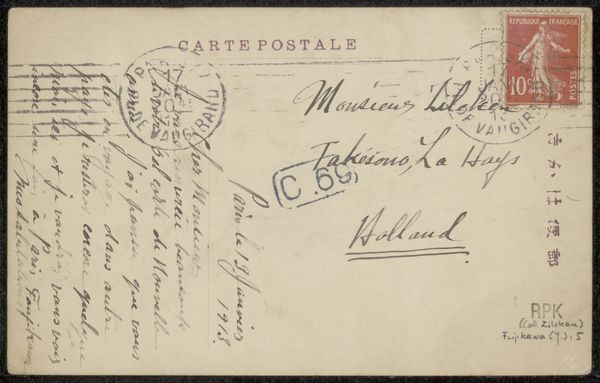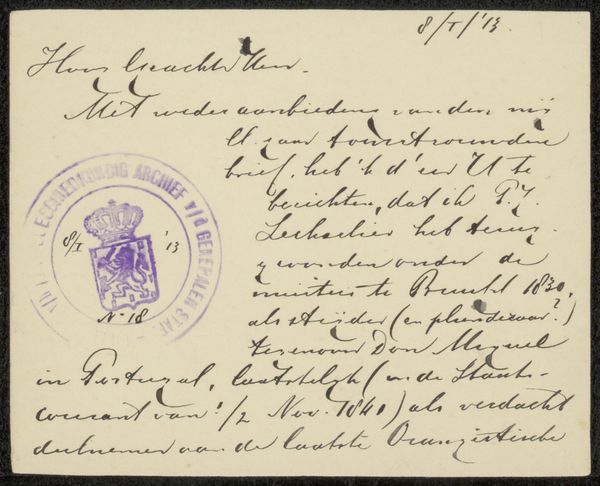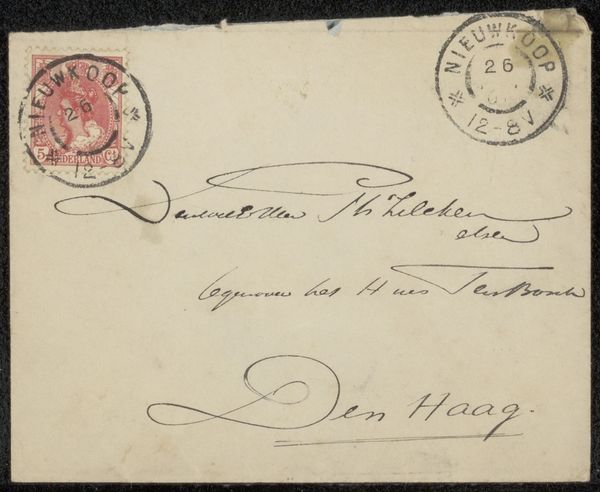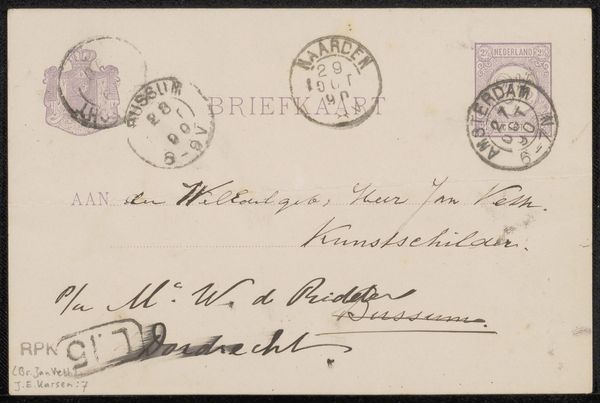
Copyright: Rijks Museum: Open Domain
Curator: Gustave Geffroy, a prominent French critic, wrote this postcard, "Briefkaart aan Philip Zilcken," before 1906. It's a small, intimate piece. What are your first thoughts? Editor: Well, the aged paper immediately catches my eye. The texture seems almost palpable. I'm drawn to the contrast between the precise lines of the printed text and the looser script of the address, hinting at a sense of both formality and intimacy. Curator: Absolutely. The address itself gives insight, locating Zilcken at the Grand Hotel in Barcelona. Consider that backdrop—Barcelona was a hotbed of modernist ferment at the turn of the century. Who was Zilcken and why was he there? This directs our attention to a complex intersection of class, artistic circles, and geographical location, prompting us to question whose voices and experiences are often marginalized or amplified in art history. Editor: Yes, and note how Geffroy balances text with emptiness, guiding the eye through careful juxtapositions of ink and paper. There's a delicate dance happening between the sparseness of the whole and its textural complexity when we zoom in. Curator: True. Moreover, as a critic deeply invested in the Impressionist movement, Geffroy's correspondence could hold keys to understanding artistic alliances, the patronage networks sustaining them, and, perhaps even political dimensions. Editor: That's a valid point. And how those postal markings function within the design! Each cancelled stamp creates layers of subtle abstract markings that speak to time, place, and delivery processes all made manifest. Curator: Considering Geffroy’s connections, examining the symbolism of the imagery and official letter markings within this modest postcard could illuminate broader sociopolitical commentaries. Who holds the power in communication, then and now? Editor: The beauty lies in its elegant economy. We must remember, it's through such considered application of means that its aesthetic unity resides. Curator: I see the postcard as an object enmeshed within broader cultural and political webs. What begins as one artist writing to another about what is on his mind may expose hidden social inequities in need of address. Editor: Yes, it serves to show how details of graphic elements contribute to both meaning and feeling in these wonderful old artworks. Thanks for highlighting some details.
Comments
No comments
Be the first to comment and join the conversation on the ultimate creative platform.
